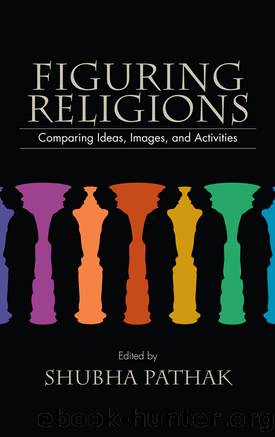Figuring Religions by Unknown

Author:Unknown
Language: eng
Format: epub
ISBN: 3408729
Publisher: State University of New York Press
Published: 2013-03-28T00:00:00+00:00
THIRTEENTH-CENTURY DEVELOPMENTS OF THE NURSING-MOTHER IMAGE
The question of why an image focused so specifically on divine and human interrelationships develops at this time must remain somewhat open. Yet the image does seem to reflect certain cultural factors of its period. Modern scholars of Jewish mysticism generally see the development of kabbalistic theology in part as a response to the flowering of Jewish philosophy and its model of a divinity that can be encountered solely through intellectual effort.49 In this sense, Kabbalah can be understood as a religious revitalization movement. Certainly, the image of God as a nursing motherâwith its emphasis on relationality, affective spirituality, and divine intimacyâserves as an alternative model for understanding God.
In addition, it is likely that kabbalistic theology developed in part as a consequence of Christian missionizing efforts, which increased dramatically during the thirteenth century. The Cistercians, Dominicans, and Franciscans all rejected the earlier model of the cloistered monk, turning instead toward itinerant preaching and pastoral care.50 Moreover, many of these monastic orders were eager to impose on Jews the Church's authority over heretics.51 A central part of the medieval Christian argument against Judaism was the idea that God had turned His back on the Jews because they had denied Jesus as Christ. Hence a theology of relationship like that provided by the image of God as a nursing mother may have served as a Jewish response to and negation of Christian criticism.
Yet kabbalistic theology may have been influenced by contemporary Christian spirituality as well. During the twelfth century, the use of feminine metaphors in Christian theology grew.52 These feminine images were invoked not only in the theology of the Virgin Mary, which became extremely important in twelfth-century Western Christianity, but also in depictions of Jesus as mother,53 Ecclesia as mother,54 and male clerical authority figures as mothers55âall of which appeared in conjunction with suckling imagery.56 This imagery, as in thirteenth-century Jewish theology, provided a model for understanding the relationships between divinity and humanity, often serving as a metaphor for spiritual transmission and instruction.57
Both Rachel Fulton and Caroline Bynum connect Christian suckling imagery with an increased interest in affective spirituality and the religious models that such spirituality inspires.58 But Jewish suckling imagery, while containing an affective component, would be characterized incorrectly as being focused on affectivity. There is a difference between a transmission of affectivity and instruction, as in the Christian model of divine suckling, and the overflow of the divine life itself, as in the kabbalistic model. In kabbalistic texts, affective language simply adds further texture to the suckling image rather than being an end in itself. Yet Christian suckling imagery resembles its Jewish counterpart in its association primarily with male clergy members rather than female mystics or cloistered women.59
Despite this similarity between kabbalistic and Christian suckling imageries, other differences remain. Christian suckling imagery is part of a broader twelfth-century theology of Mary as mediator between humanity and divinity. Although her role is similar to that of the Shekhinah,60 Mary mediates in a very different sense.
Download
This site does not store any files on its server. We only index and link to content provided by other sites. Please contact the content providers to delete copyright contents if any and email us, we'll remove relevant links or contents immediately.
The 5 Love Languages: The Secret to Love That Lasts by Gary Chapman(8530)
The Space Between by Michelle L. Teichman(6098)
Assassin’s Fate by Robin Hobb(5254)
Wiseguy by Nicholas Pileggi(4601)
Everything Happens for a Reason by Kate Bowler(4076)
Gerald's Game by Stephen King(3928)
A Simplified Life by Emily Ley(3581)
The Power of Positive Thinking by Norman Vincent Peale(3462)
Pillow Thoughts by Courtney Peppernell(3416)
Resisting Happiness by Matthew Kelly(2892)
Girl, Wash Your Face by Rachel Hollis(2828)
Being Aware of Being Aware by Rupert Spira(2712)
Name Book, The: Over 10,000 Names--Their Meanings, Origins, and Spiritual Significance by Astoria Dorothy(2498)
Real Sex by Lauren F. Winner(2481)
More Language of Letting Go: 366 New Daily Meditations by Melody Beattie(2456)
The Holy Spirit by Billy Graham(2427)
Fast Facts on Defending Your Faith by John Ankerberg & John Weldon(2394)
Victory over the Darkness by Neil T. Anderson(2389)
The Secret Power of Speaking God's Word by Joyce Meyer(2258)
